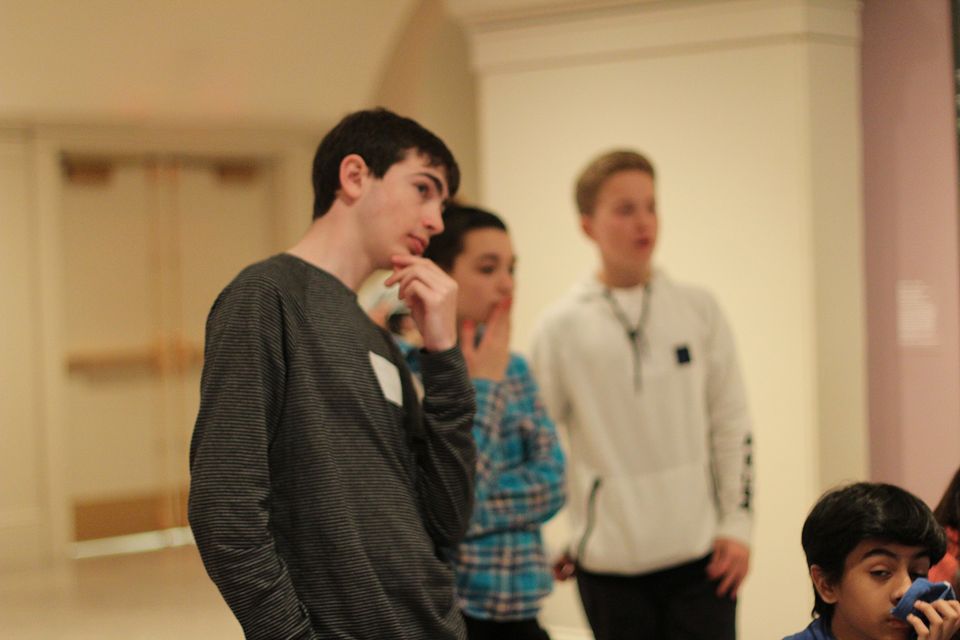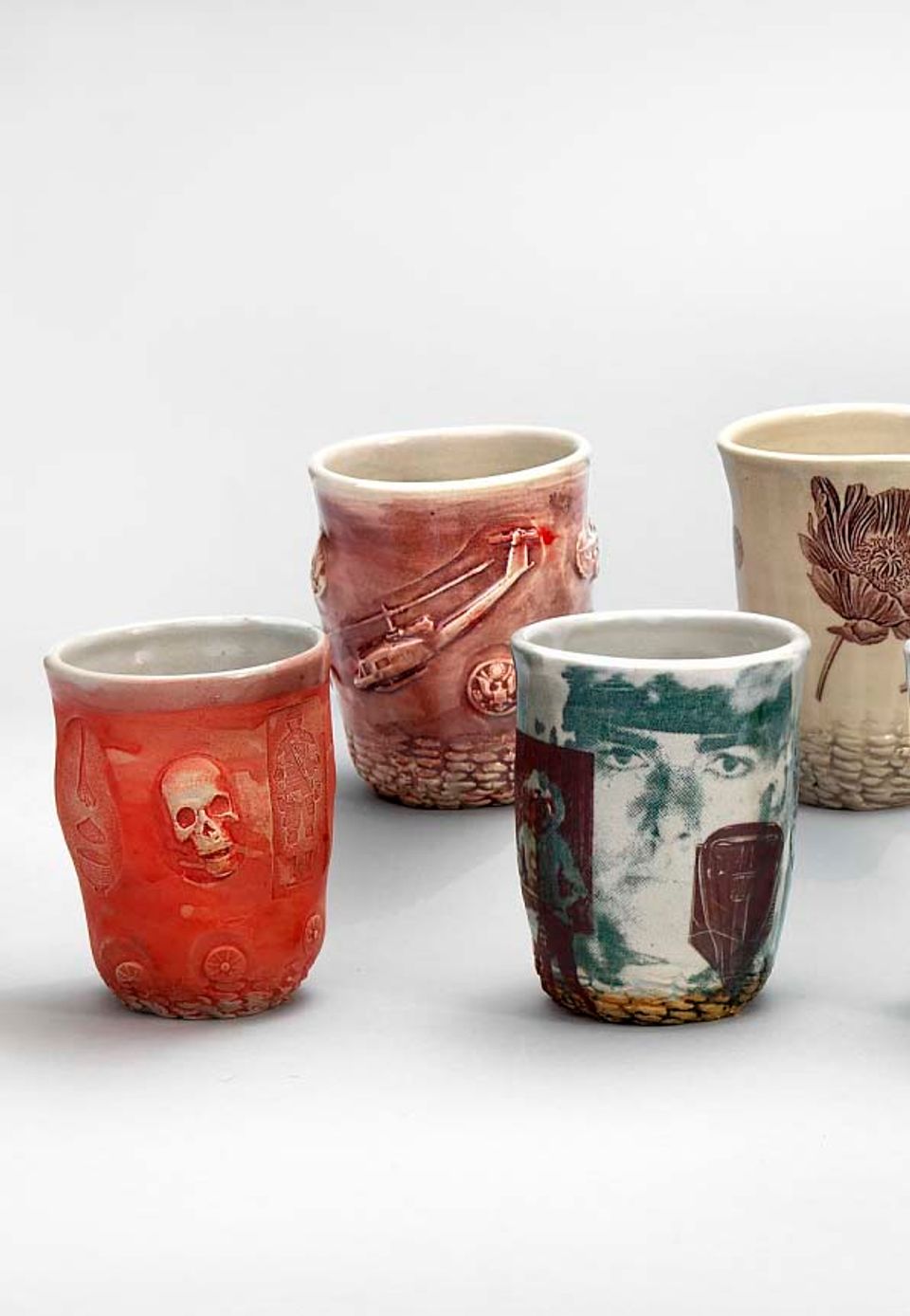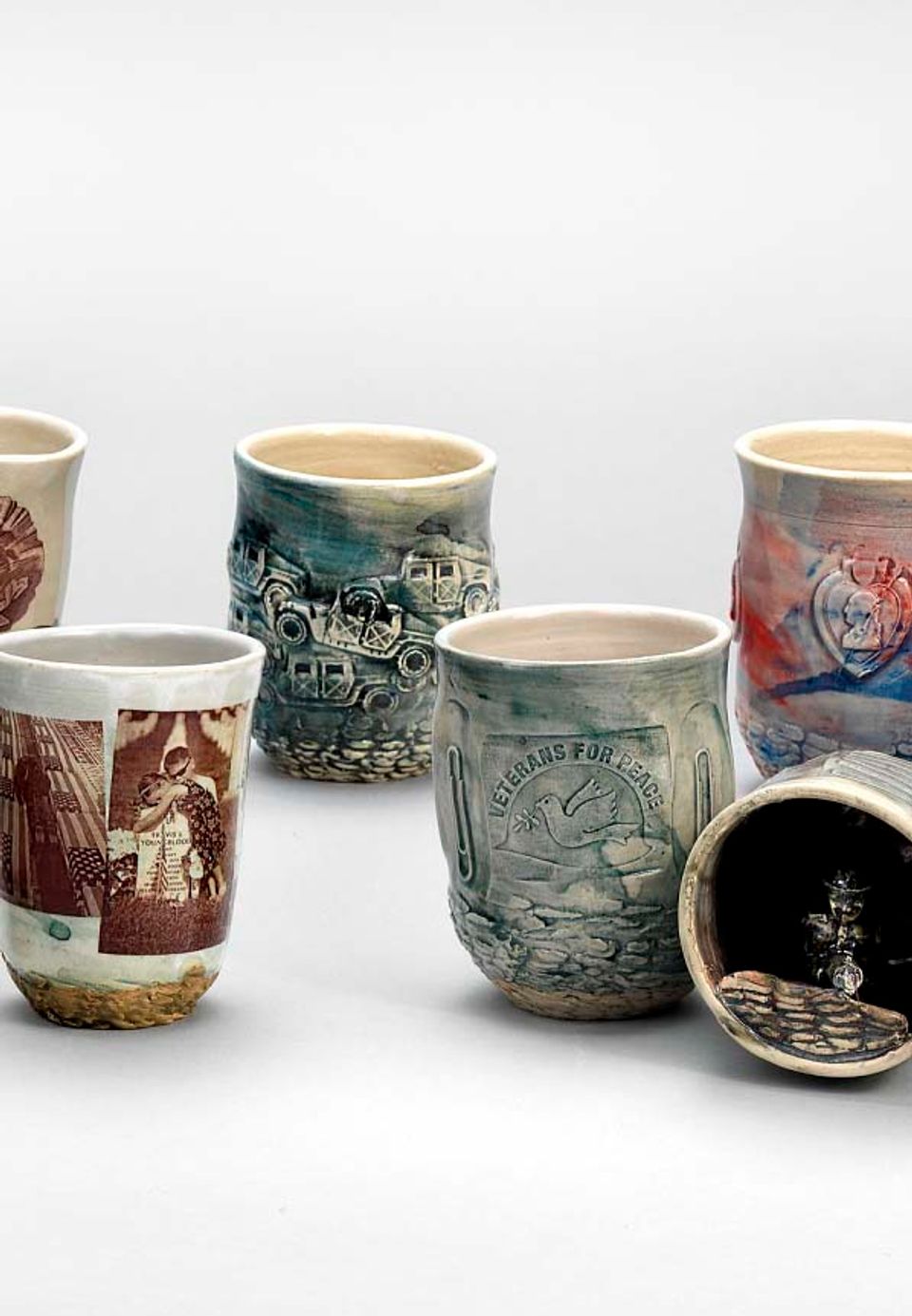
Ehren Tool, 204 of Thousands, 2014-2015, stoneware with glaze and decals, Smithsonian American Art Museum
Essential Questions
- What can artworks tell us about ourselves?
- How can interpreting artworks help us develop the skill of inferring information from the objects we use and live amongst?
- How can looking at the social, economic, and political context within which an artwork is created enhance our understanding of it?
Arc of Learning
(85 minutes)
- What Can One Learn from the Objects We Use and Live Amongst?
- Looking Slowly at the Artwork
- Learning About Ourselves and Our Times from Artworks
- What Is the Artwork About?
- Optional: Metacognitive Break
- Meet the Artist
- Connect with the Artist
- Optional: Metacognitive Break
- Revisiting Your Interpretation
- Reflection
Look Slowly
The first set of learning experiences in this unit serve as a foundational opportunity to exercise the skill of asking questions in order to support further learning and inquiry. When students are the ones posing the questions (as they are in these activities), they are more likely to engage in the learning.

Teaching Moves
Having first used a cell phone as an everyday example of an object that can yield information, students then examine an artwork slowly and carefully to prepare us to explore the information it can yield.
Consider Context
These three learning experiences encourage students to examine the artwork as a product of its cultural, historical, and technological context. From the artwork, students try to infer information about the people surrounding it, their culture, their technology, and the social, economic, and political conditions of the time.

Teaching Moves
Having posed a series of questions about the artwork, students use a thinking pattern (Claim-Support-Question) to interpret the artwork based on a synthesis of observation, inferences, and information.
Meet the Artist
This set of learning experiences provide an opportunity for students to compare the information they might have inferred from the artwork with some information on the artist.

Teaching Moves
Having captured the big ideas of a text about the artist, students synthesize the information they have learned so far, generate new questions, and compare their original thinking to new ideas they have about artworks as a product of their time.

















